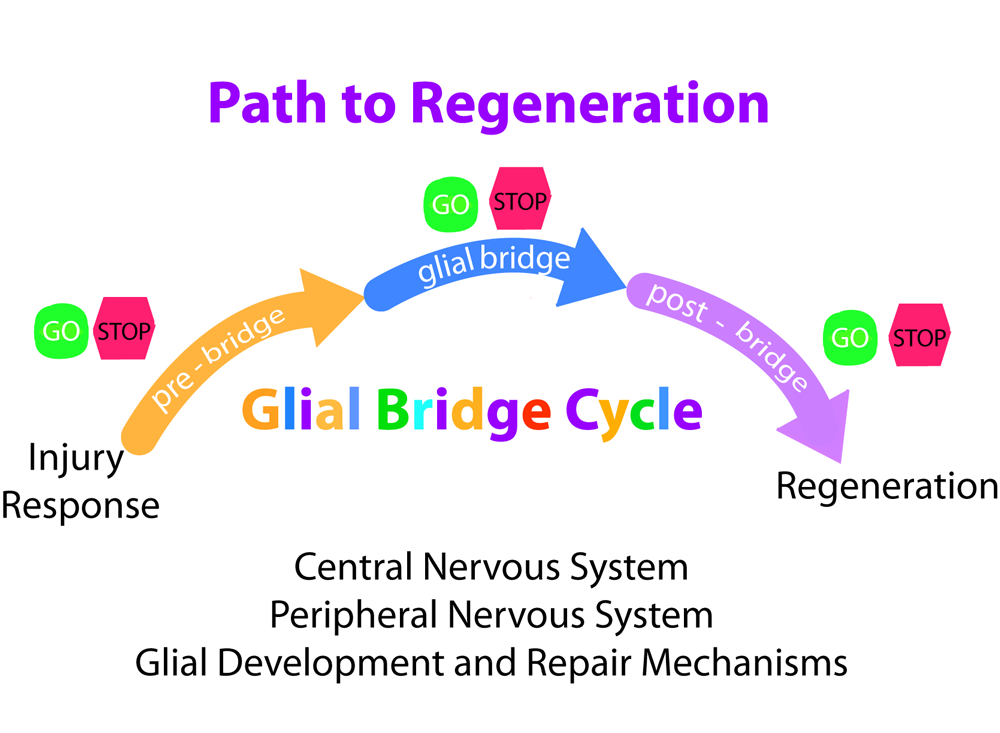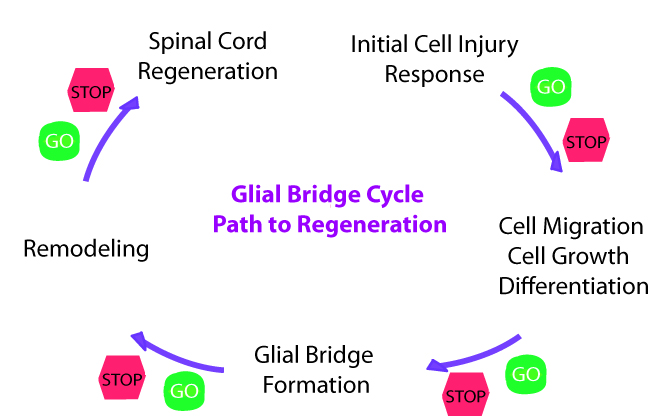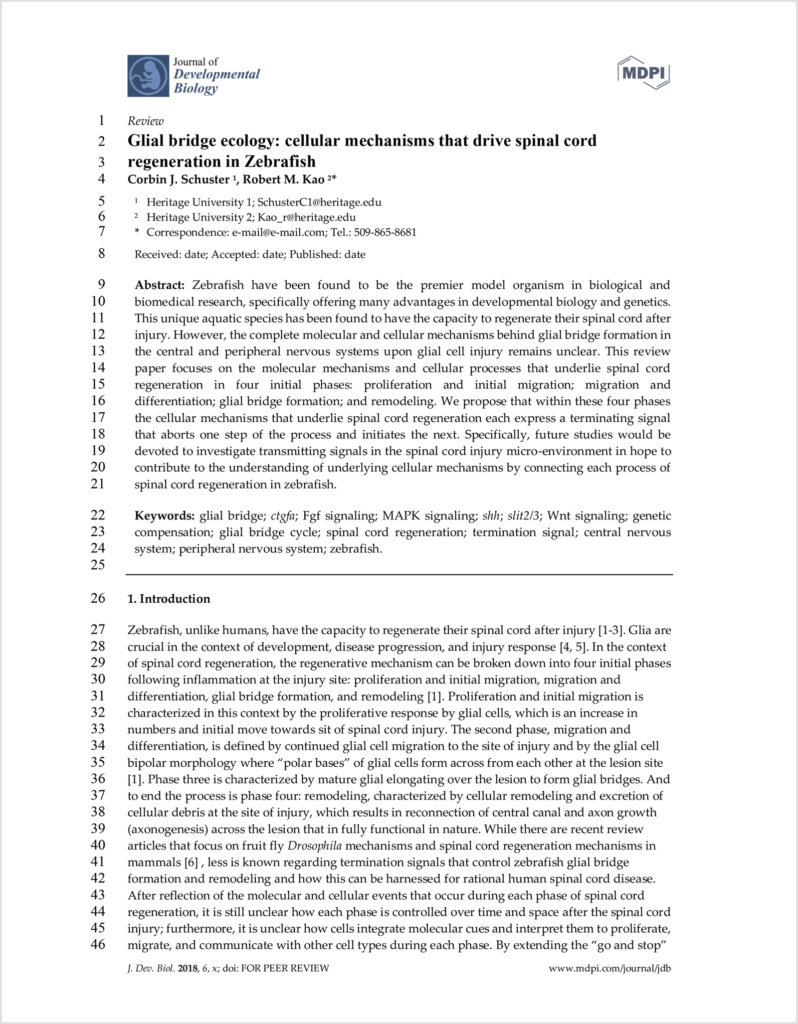Glial Bridge Ecology

Glial bridge ecology: cellular mechanisms that drive spinal cord regeneration in Zebrafish
Zebrafish have been found to be the premier model organism in biological and biomedical research, specifically offering many advantages in developmental biology and genetics. This unique aquatic species has been found to have the capacity to regenerate their spinal cord after injury. However, the complete molecular and cellular mechanisms behind glial bridge formation in the central and peripheral nervous systems upon glial cell injury remains unclear. This review paper focuses on the molecular mechanisms and cellular processes that underlie spinal cord regeneration in four initial phases: proliferation and initial migration; migration and differentiation; glial bridge formation; and remodeling. We propose that within these four phases the cellular mechanisms that underlie spinal cord regeneration each express a terminating signal that aborts one step of the process and initiates the next. Specifically, future studies would be devoted to

The full PDF is available here: Glial bridge ecology: cellular mechanisms that drive spinal cord regeneration in Zebrafish.

